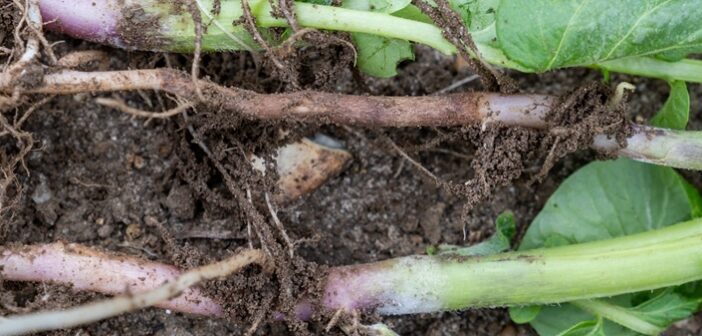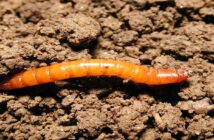Changing rotations and reduced tillage could explain why Rhizoctonia solani is becoming more prevalent and damaging in potato crops, and growers need to be alert to the disease threat this spring.
Many potato growers are now moving less soil between crops and reduced tillage has been shown to encourage survival the pathogen in the soil.
There are also more species of plants being grown in some rotations, whether that is driven by a greater area of cover crops, environmental schemes, or more cash crop options.
In theory, this diversity could reduce available Rhizoctonia inoculum for susceptible crops, including potatoes but it also provides more hosts for soil-borne persistence.
Prof. Rumiana Ray at the University of Nottingham believes there are knowledge gaps that need filling, particularly as farming systems have changed rapidly over recent years.
“Growers and agronomists need to know the current soil-borne disease situation to assess the impact of these practices and implement alternative or corrective measures, if needed,” explains Rumiana.
Hutchinsons agronomist and potato specialist Andrew Goodinson says currently that leaves good husbandry, combined with the application of soil- and seed-applied fungicides, as the main control measures where risk is identified.
He recommends use of in-furrow fungicides like azoxystrobin or fluxapyroxad where soil-borne risk is identified and combines that with a seed treatment where needed.
There are liquid seed-treatment options like flutolanil-based RhiNo and Andrew sees these becoming much more popular in the future as seed is treated in the shed over a roller table ahead of planting.
This takes an operation off a busy planter operator already grappling with accurate seed spacing and in-furrow applications of fungicide and fertiliser, before even considering powder seed treatment application.
However, most of his growers are still using powder flutolanil formulation RhiNo DSG, as it gives flexibility, particularly where seed is delivered “just-in-time”.
“But whatever seed treatment you decide to use, effectiveness does rely on excellent coverage. That makes correct setup, calibration, and maintenance of on-planter applicators crucial,” he adds.
Planting conditions and adequate early nutrition are the final considerations, with timely cultivations and seed-bed preparations that avoid soil compaction key to seeing the crop grow away from the threat of Rhizoctonia.
“Anything that can reduce stress and encourage crop development is a good thing and we are using phosphite-based products as well.
“Other biological products will play an increasingly important role in potatoes, but we are still learning about how and when they are best applied for consistent success,” notes Andrew.




